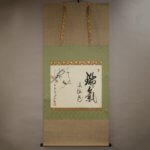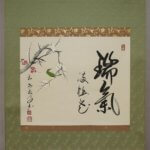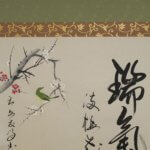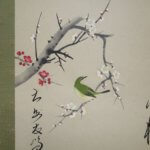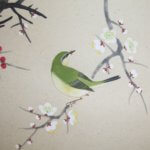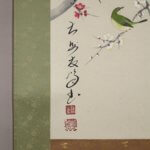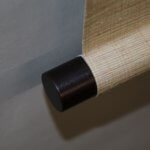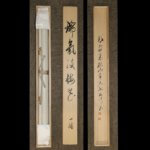Products Lineup
News / Blog
Other Menus
Kakejiku Hanging Scroll: Calligraphy : Plum Blossom Is Full of a Splendidly Divine Atmosphere / Red & White Plum Blossom and Warbler / Takahashi Yūhō - Zuiki Baika ni Mitsu & Kōhakubai ni Uguisu
- Product ID
- 0265
- Name
- Takahashi Yūhō
- Profile
The chief priest at the Daianzen-ji temple in Fukui pref.
1948
Born in Fukui city, Japan
1970
Graduated from the Kyoto Hanazono University (Major: Buddhism)
Joined and practiced asceticism at the Kaisei-ji temple in Hyogo for 6 years1989
Appointed as the chief priest at the Daianzen-ji temple in Fukui
2008
Exhibition at the Takumi museum in JR Gifu Station
Exhibition at the art gallery in Inoue department in Nagano2011
Opened a gallery in the Daianzen-ji temple
Also appointed as the chief priest at the Housyou-ji temple in Ishikawa
Exhibition at the “Gallery Metanoia” in Paris, France2014
Performed at the Sarah Lawrence College in NY, USA
- Size
- 690mm x 1410mm
- Roller End Material
Red sandalwood- Material of the Work
- Japanese paper
- Stock Condition
- Sold out
- Description
Plum blossom has, since ancient times, been considered a good omen as a symbol of life force, allowing its flowers to bloom in the first days of spring after cold winter. People have been rejoicing in the bloom of the plum blossom in the warm air of early spring, associating it with their hopes for the future. The phrase “Zuiki Baika Ni Mitsu” is Zen words that express such a springtime scene. “Zuiki” signifies “a splendidly divine atmosphere” as a word to rejoice in the arrival of spring, which is reflected in the plum blossom in full bloom. This work features such a phrase in spring, written by modern Zen monk Takahashi Yūhō, a renowned expert calligrapher. The characters written in a flowing-like style of calligraphy look as if rejoicing in the arrival of spring. Next to the calligraphy, Miyake Wakō, a Japanese-style painter specializing in kachōga (painting of flower and bird), additionally painted the traditional painting subject “Kōhakubai ni Uguisu (red/white plum blossom and warbler).” Truly, this work is worthy of being used to decorate the early spring.



